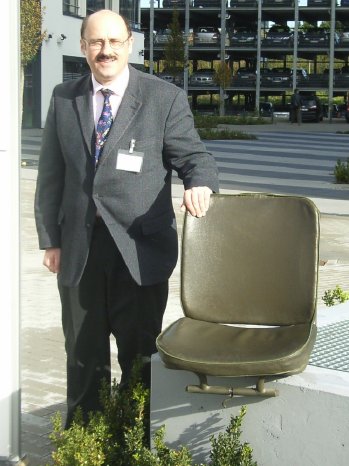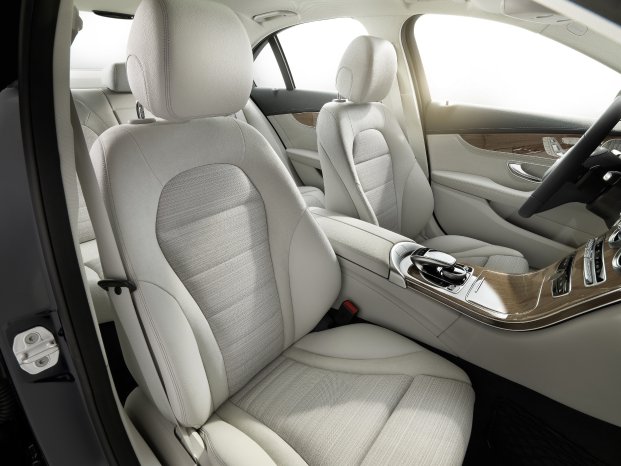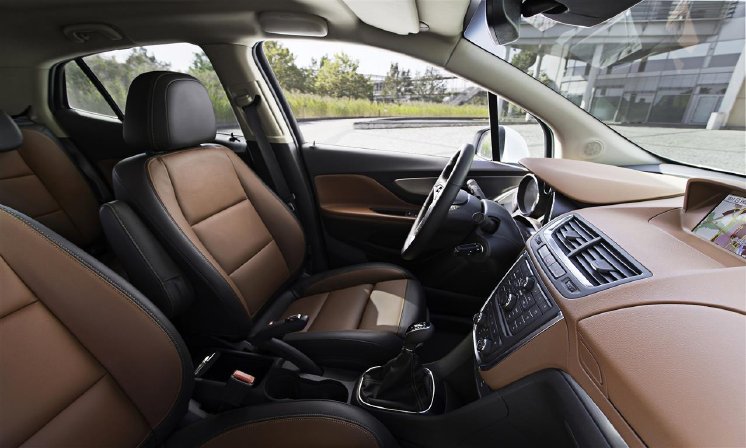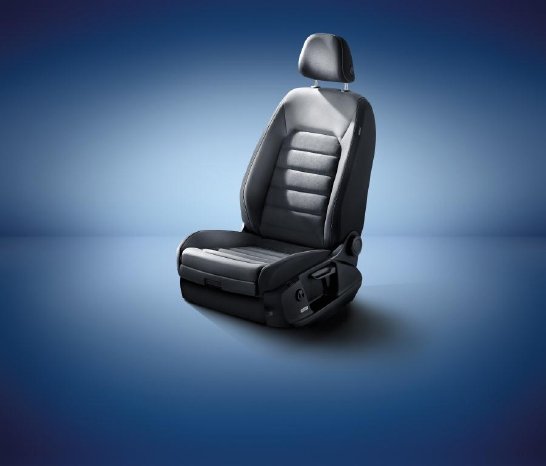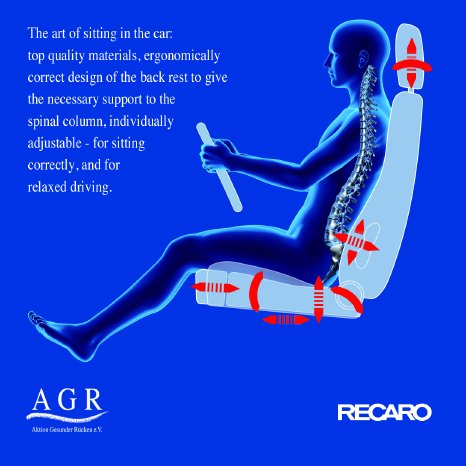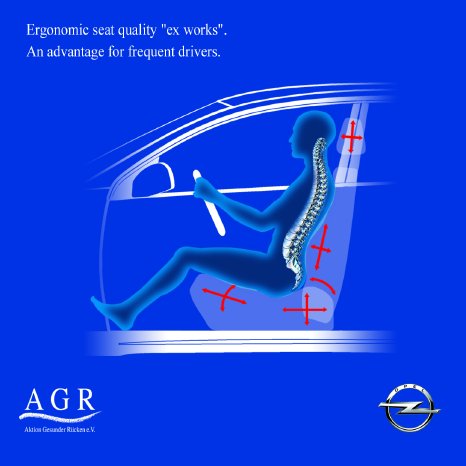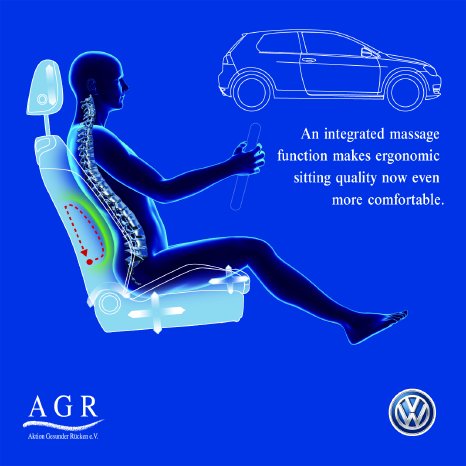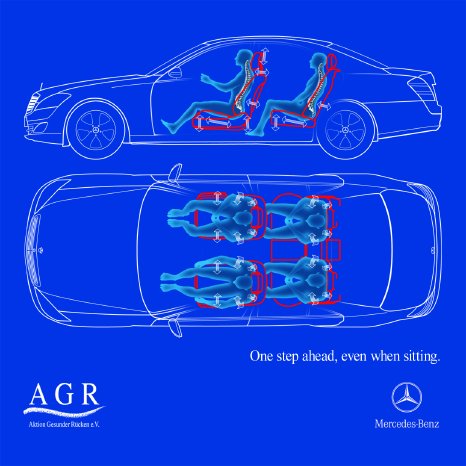Car seats in the past and present
At first glance, a modern car can scarcely be said to be the same vehicle as fifty years ago. And we find great differences if we look at how cars have developed just in the last ten years - including the car seat, among others. Until not too long ago, car seats had a really minimalist structure. They usually consisted of a seat surface and a backrest covered in leather, with the backrest coming no higher than the shoulders. That was all the features that a car seat had. Head rests, individual adjustments or a back-friendly backrest - that was all still a long way off. At times when car driving was still deemed to be a luxury, this was no too great a problem. But the more it became a habit for the population at large, the more physical discomfort and complaints such as tension and pains became a frequent problem. Unsafe and not at all back-friendly - that would be today's condemning verdict about yesteryear's car seats.
Nowadays, the car has become an integral part of our lives. Many people use it every day. For occupational categories such as taxi drivers or field workers, the car even becomes the workplace in which they spend several hours a day, covering tens of thousands of kilometres each year. Despite all the progress that has been made particularly in terms of traffic safety, unfortunately manufacturers all too frequently neglect ergonomic interior fittings in the vehicle, including primarily a back-friendly car seat. Although headrests have meanwhile become a standard feature, there are still numerous car seats on the market that provoke backache, tension or even impaired concentration, also in those who only drive occasionally. Drivers who spend lots of time in the car for their job suffer even more.
Experts confirm the problem. The company doctor at E-Plus Mobilfunk GmbH, Dr. Roland Hüser, says: "The ergonomic features of a car seat have a significant impact on the back health of those who drive a lot for work reasons". He sees both the manufacturers and those companies employing frequent drivers such as field workers as having a special responsibility here, and continues: "Firstly, it must be possible to purchase an ergonomic car seat (manufacturers), and secondly, the will must be there to actually make this specific purchase (companies). Health protection must not be an item on the slash list when it comes to buying vehicles". And so something has to be done here, because in the long term, unergonomic car seats jeopardise the (back) health of the employees.
Exemplary interior features
And yet there are some commendable exceptions, referring to those car manufacturers who have recognised the importance of ergonomic car seats and produced corresponding models. Adam Opel AG, Daimler AG and Volkswagen AG already offer back-friendly car seats as a standard feature. Furthermore, all three manufacturers even offer certified seats with the AGR seal of approval that comply with the strictest ergonomic criteria, in some cases also in standard vehicles. Company doctor Dr. Roland Hüser welcomes this development, but argues that more car manufacturers should give due consideration to this aspect: "When it comes to drawing up a risk and stress assessment, the manufacturers ought to provide a list with the major attributes of the various car seats they offer for each particular model. If the chemical industry can provide safety data sheets, then the car industry should be able to follow suit at least on request."
Those who don't want to buy a new Opel, Mercedes or Volkswagen with certified seats as a standard feature have the possibility of putting ergonomic seats into existing vehicles. Corresponding retrofit kits are available from Recaro. The Ergomed and Style models have also been awarded the AGR seal of approval and can be fitted without any problems in (almost) all vehicle models. One particularly practical aspect is that the retrofit seat can simply go with you on changing the vehicle.
Certified car seats
Car seats have to fulfil a number of crucial criteria in order to be certified with the AGR seal of approval. Obligatory items include a firm basic structure, a backrest of adequate height and various individual possible settings. It must be possible to make flexible adjustments for example to the height, tilt, depth and length of the seat. The lumbar spine must be supported with what is called a 4-way lordosis support. Sufficient side supports for the seat padding and backrest are also advisable for greater stability while driving. As a result, the seat can be adapted individually to the driver.
About the AGR
For meanwhile 20 years now, the Campaign for Healthier Backs has been working at enhancing public awareness for the significance of back-friendly conditions in order to avoid backache. Its "certified & recommended" seal of approval is an important decision-making aid for consumers. Particularly back-friendly everyday products can be certified with the seal of approval by independent medical bodies. The seal of approval is awarded among others to office furniture, bicycles, shoes, bed systems and also car seats. For more information about making your everyday routines more back-friendly and back-friendly everyday products that have been certified with the AGR seal of approval, and much more besides, please go to http://www.agr-ev.de/en/
In brief
The AGR seal of approval is an important guide when looking at the ergonomic attributes of everyday products. Car seats too have to fulfil numerous requirements to receive the seal of approval. The association also certifies selected retailers, including car dealerships, that always offer the best possible advice under ergonomic aspects. Even if recent decades have seen great progress in the development and features of car seats, many manufacturers still have a lot to do. Experts are of the opinion that there must be an even greater focus on back-friendly car seats.
